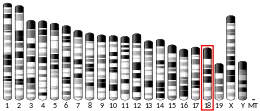| DSG4 | |||||||||||||||||||||||||||||||||||||||||||||||||||
|---|---|---|---|---|---|---|---|---|---|---|---|---|---|---|---|---|---|---|---|---|---|---|---|---|---|---|---|---|---|---|---|---|---|---|---|---|---|---|---|---|---|---|---|---|---|---|---|---|---|---|---|
| Identifiers | |||||||||||||||||||||||||||||||||||||||||||||||||||
| Aliases | DSG4, CDGF13, CDHF13, HYPT6, LAH, desmoglein 4 | ||||||||||||||||||||||||||||||||||||||||||||||||||
| External IDs | OMIM: 607892 MGI: 2661061 HomoloGene: 65341 GeneCards: DSG4 | ||||||||||||||||||||||||||||||||||||||||||||||||||
| |||||||||||||||||||||||||||||||||||||||||||||||||||
| |||||||||||||||||||||||||||||||||||||||||||||||||||
| |||||||||||||||||||||||||||||||||||||||||||||||||||
| |||||||||||||||||||||||||||||||||||||||||||||||||||
| |||||||||||||||||||||||||||||||||||||||||||||||||||
| Wikidata | |||||||||||||||||||||||||||||||||||||||||||||||||||
| |||||||||||||||||||||||||||||||||||||||||||||||||||
Desmoglein-4 is a protein that in humans is encoded by the DSG4 gene.[5][6]
See also
References
- 1 2 3 GRCh38: Ensembl release 89: ENSG00000175065 - Ensembl, May 2017
- 1 2 3 GRCm38: Ensembl release 89: ENSMUSG00000001804 - Ensembl, May 2017
- ↑ "Human PubMed Reference:". National Center for Biotechnology Information, U.S. National Library of Medicine.
- ↑ "Mouse PubMed Reference:". National Center for Biotechnology Information, U.S. National Library of Medicine.
- ↑ Whittock NV, Bower C (Mar 2003). "Genetic evidence for a novel human desmosomal cadherin, desmoglein 4". J Invest Dermatol. 120 (4): 523–30. doi:10.1046/j.1523-1747.2003.12113.x. PMID 12648213.
- ↑ "Entrez Gene: DSG4 desmoglein 4".
Further reading
- Strausberg RL, Feingold EA, Grouse LH, et al. (2003). "Generation and initial analysis of more than 15,000 full-length human and mouse cDNA sequences". Proc. Natl. Acad. Sci. U.S.A. 99 (26): 16899–903. Bibcode:2002PNAS...9916899M. doi:10.1073/pnas.242603899. PMC 139241. PMID 12477932.
- Kljuic A, Bazzi H, Sundberg JP, et al. (2003). "Desmoglein 4 in hair follicle differentiation and epidermal adhesion: evidence from inherited hypotrichosis and acquired pemphigus vulgaris". Cell. 113 (2): 249–60. doi:10.1016/S0092-8674(03)00273-3. PMID 12705872. S2CID 15131587.
- Rafiq MA, Ansar M, Mahmood S, et al. (2004). "A recurrent intragenic deletion mutation in DSG4 gene in three Pakistani families with autosomal recessive hypotrichosis". J. Invest. Dermatol. 123 (1): 247–8. doi:10.1111/j.0022-202X.2004.22715.x. PMC 6157275. PMID 15191570.
- Gerhard DS, Wagner L, Feingold EA, et al. (2004). "The Status, Quality, and Expansion of the NIH Full-Length cDNA Project: The Mammalian Gene Collection (MGC)". Genome Res. 14 (10B): 2121–7. doi:10.1101/gr.2596504. PMC 528928. PMID 15489334.
- Nagasaka T, Nishifuji K, Ota T, et al. (2004). "Defining the pathogenic involvement of desmoglein 4 in pemphigus and staphylococcal scalded skin syndrome". J. Clin. Invest. 114 (10): 1484–92. doi:10.1172/JCI20480. PMC 525737. PMID 15545999.
- Bazzi H, Martinez-Mir A, Kljuic A, Christiano AM (2006). "Desmoglein 4 mutations underlie localized autosomal recessive hypotrichosis in humans, mice, and rats". Journal of Investigative Dermatology Symposium Proceedings. 10 (3): 222–4. doi:10.1111/j.1087-0024.2005.10110.x. PMID 16382669.
- Bazzi H, Getz A, Mahoney MG, et al. (2006). "Desmoglein 4 is expressed in highly differentiated keratinocytes and trichocytes in human epidermis and hair follicle". Differentiation. 74 (2–3): 129–40. doi:10.1111/j.1432-0436.2006.00061.x. PMID 16533311.
- Wajid M, Bazzi H, Rockey J, et al. (2007). "Localized autosomal recessive hypotrichosis due to a frameshift mutation in the desmoglein 4 gene exhibits extensive phenotypic variability within a Pakistani family". J. Invest. Dermatol. 127 (7): 1779–82. doi:10.1038/sj.jid.5700791. PMID 17392831.
This article is issued from Wikipedia. The text is licensed under Creative Commons - Attribution - Sharealike. Additional terms may apply for the media files.



